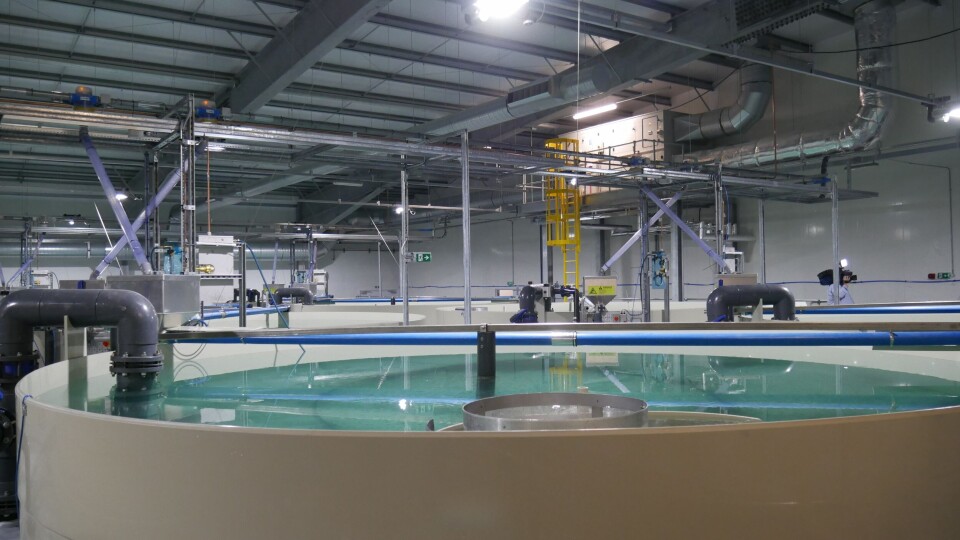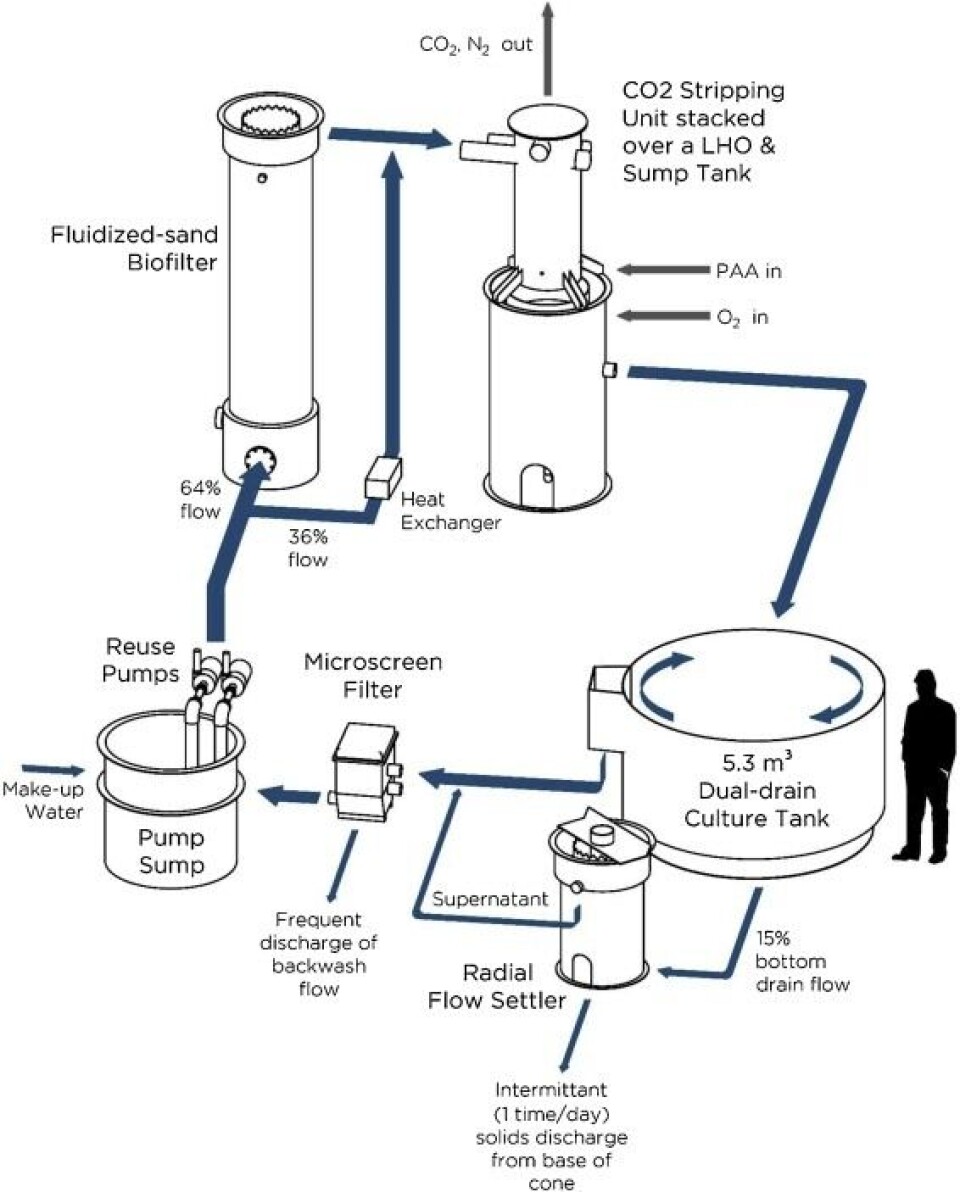
Study: Ozone still out on its own as RAS water treatment
A trial by researchers in the United States has shown that semi-continuous dosing of the industrial disinfectant peracetic acid (PAA) cannot be used as a direct alternative to low-dose ozone in recirculating aquaculture systems (RAS).
Ozone improves the RAS environment by enhancing water clarity, microflocculating fine solids, adding oxygen, and reducing dissolved metals, nitrite, and organic concentrations. But it is also relatively expensive and complex to use and can present safety hazards for fish and human health.
PAA has been described as a powerful oxidant capable of producing water quality benefits comparable to those expected with ozone application.
Trout production
But researchers from the Conservation Fund’s Freshwater Institute found that although PAA dosing at concentrations of 0.05-0.30 mg/L was compatible with trout production and biofilter performance, it didn’t create dramatic water quality improvements like those expected when applying low-dose ozone.
Hopes that PAA might also have an effect on geosmin and 2-methylisoborneol (MIB), two by-products of RAS production that can give fish an “off” flavour, also proved unfounded.
Researchers used six identical RAS for the trial. Three RAS were semi-continuously dosed with PAA, and the other three RAS did not receive PAA and served as controls. Three target PAA doses (0.05, 0.10, and 0.30 mg/L) were evaluated separately at approximately monthly intervals/dosing periods.

Safe and effective protocol
The scientists concluded that although PAA dosings provided only marginal improvements in water quality, this does not negate the potential for PAA to be applied differently in RAS, such as with once-daily or periodic batch addition, an approach which has shown promise for antimicrobial and prophylactic control.
They added that the research demonstrated a safe and effective protocol for dosing PAA in RAS of this design that could be replicated elsewhere.
They continued: “Although semi-continuous dosing of PAA from 0.05-0.30 mg/L did not result in profound water quality improvements, this dose was compatible with fish health and performance, as well as biofilter operation.
“These results are important when considering PAA’s capacity as a water sanitiser or disinfectant and its possible use to improve fish health by controlling pathogens in the water column. Although state of-the-art RAS inherently provide robust biosecurity against the introduction of obligate fish pathogens, opportunistic pathogens will occasionally cause disease in RAS under conditions that favour the infectious agent (Wedemeyer, 1996).
Viable chemical to control bacteria
“Given the innocuous nature of low concentration PAA demonstrated during this study, PAA should not be ruled out as a viable chemical to control pathogenic bacteria with fish present in RAS. Few chemicals are compatible as water sanitisers in RAS; therefore, more research is required to understand PAA’s antimicrobial effects in RAS at low concentrations and when applied using methods other than those used during the present study.”
The full study, Evaluating the effects of prolonged peracetic acid dosing on water quality and rainbow trout Oncorhynchus mykissperformance in recirculation aquaculture systems, is published in the journal Aquacultural Engineering and can be found here. The lead author is John Davidson, senior research associate at the Conservation Fund.






















































